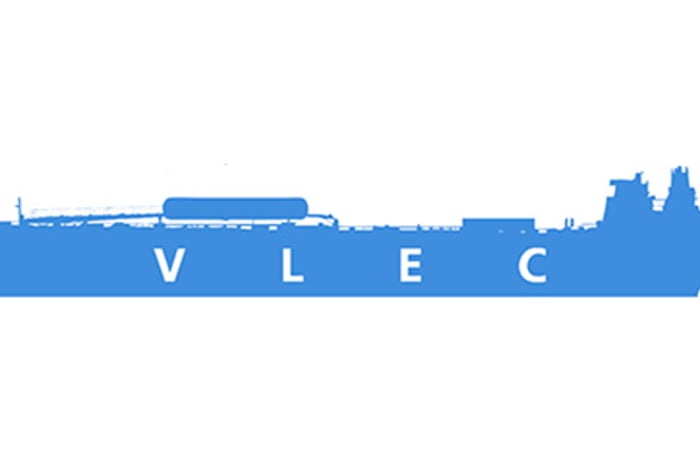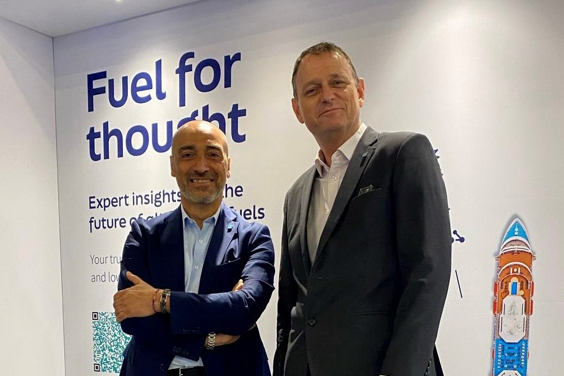![]() The shale gas revolution in the USA – where the boom in oil and gas production from shale deposits has made ethane and ethylene available in ever-growing quantities – has prompted excitement and optimism in the shipping industry.
The shale gas revolution in the USA – where the boom in oil and gas production from shale deposits has made ethane and ethylene available in ever-growing quantities – has prompted excitement and optimism in the shipping industry.
So Lloyd’s Register’s gas technology teams are producing a special report on the rise and rise of ethane and ethylene and the growing demand for new methods of ethane carriage.
Today’s owners and operators recognise ethane as a key cargo for liquefied gas carriers – particularly as the volume and size of shale gas deposits uncovered in the US and elsewhere are growing by the week.
At the moment, the colourless gas is carried in smallscale, semi-pressurised gas carriers on short sea routes with latest figures from IHS SeaWeb showing there are 141 ethane and ethylene carriers worldwide with capacities ranging from 918 m³ to 22,000 m³. And the recent US revolution in ethane and ethylene production has fuelled demand for far larger, highcapacity carriers that can carry the fuel on deepsea as well as shortsea routes.
Enter Lloyd’s Register. We have been working with marine industry partners on the development of a new super-size carrier or VLEC (Very Large Ethane Carrier) with a projected capacity of between 84k and 90k cbm.
Crucial to this exciting and ambitious project is the design and selection of the cargo containment systems on the VLEC – with the choice of tanks critical both for optimising the carrier’s performance and also for producing the highest returns on an owner’s investment.

There are many possibilities which we have been analysing and assessing so they can be adapted for use on a very large carrier. Currently the two main types of system used on today’s gas carriers are membrane and independent tanks.
With the membrane system, two of the most effective designs are the Gaztransport and Technigaz (GTT) No 96 and Mark III containment systems. What Lloyd’s Register will need to consider with the membrane options is their limitations over partial filling and sloshing subject to the sizes and shapes of the cargo tanks. The tanks will also need to be rigorously tested before they can be adapted to a larger carrier. Once these issues have been solved, membrane will become a viable option.
There are currently three independent-style systems of containments tanks – Type A, Type B and Type C. Of the Type A option, the Aker Double Barrier Tank (ADBT) might be suitable because of its double skin arrangement ensuring that any cargo leaking from the primary barrier would be contained by the secondary barrier, independently of the hull. Lloyd’s Register’s preliminary analysis of the system has indicated that more project specific review and appraisal is needed before the system can be considered so as to reach general approval.
There are two Type B tank systems that are presently available and fully approved. These are the MOSS and the SPB (Self Supporting Prismatic Type B). Both require a partial secondary barrier due to leakage if the primary barrier fails. Neither is subject to filling limit restrictions and any sloshing effects with SPBs can be reduced by internal cargo tank wash bulkheads, if necessary.
Industry experience with MOSS type ships is limited to the carriage of LNG cargos which means the approval of tanks for heavier liquefied gases like ethane and ethylene will need to be carefully evaluated. As the size of the ethane-carrying tanks would be relatively small compared with existing LNG cargo tanks, we anticipate the increase in density will not be a significant barrier to the adaptation of the tanks.
The in-service experience of using SPB tanks is limited to two vessels with aluminium cargo tanks built by IHI in 1993. Lloyd’s Register has also approved the design of SPB cargo tanks using stainless steel.
While the DSME ACTIB (Aluminium Cargo Tank IMO Type B) is approved by Lloyd’s Register with a cargo capacity of up to 214,000 m³, the cargo tank design would need to be scaled down for smaller capacity. At the moment new SPB designs are being evaluated using 3.5% nickel steel for the construction of the tanks. The design of the cargo tank will then be optimised for the specific cargo, ethane, including cargo tank supports and cargo tank insulation.
Lloyd’s Register is currently working with a major shipbuilder on the structural design analysis for the development of a cargo tank design. So the design can be approved for compliance with LR’s rules and regulations for gas carriers and the IGC Code.
 The VLEC solution prompts the possibility of burning ethane cargo as fuel, as many LNG ships with cargos of methane do nowadays. Lloyd’s Register has worked with engine-maker MAN to approve the radical conversion of MAN’s highly-respected ME-GI engine to burning ethane.
The VLEC solution prompts the possibility of burning ethane cargo as fuel, as many LNG ships with cargos of methane do nowadays. Lloyd’s Register has worked with engine-maker MAN to approve the radical conversion of MAN’s highly-respected ME-GI engine to burning ethane.
Lloyd’s Register’s extensive experience and work with flag administrations on LNG as fuel, methanol, dimethyl ether (DME), fuel cells and LPG as fuel projects makes us uniquely qualified to support the challenge of ethane as fuel.
We have issued an approval in principle (AiP) for a MAN ME-GI engine to combust ethane. MAN has delivered the documentation needed for the AiP and agreed to make the necessary design modifications to the methane version of the ME-GI.
Lloyd’s Register is also seeking the agreement of flag administrations for ethane as a fuel to be carried on board a VLEC ship – as the fuel is not incorporated in the IGC.
The engine needs to incorporate some detailed design changes to accommodate the higher pressure (i.e. c.630 bar ethane pressure with c.66 bar seal oil pressure) needed for ethane operation. These include redesigned fuel valves, control block and piping as well as some material changes. “While these are not insignificant, the conceptual engine design and the risk management philosophy will have a very high degree of commonality with the LPG-fuelled ME-LGI engine which we have already approved,” said Luis Benito, LR’s Global Strategic Marketing Manager.
Of particular note for our clients is that MAN Diesel are using a HAZID exercise carried out by Lloyd’s Register and MAN on behalf of a mutual client interested in acquiring the LPG variant as the basis for these changes. This HAZID is the basis for the risk management strategy of the project. “LR is therefore ideally placed to advise on the underlying assumptions and experience underpinning the risk management strategy,” said Benito.
“The new VLECs will be targeted to use existing terminals that are currently capable of accommodating Very Large Gas Carriers (VLGCs) as they have similar dimensions and it would be very easy to adapt these terminals,” said Benito.
"I am very excited about the potential growth and evolution of existing technology to meet the challenge of trading in the ethane market."
Forecasters predict
At the current rate of progress, volumes of methane will rise at 0.4 million barrels a day (or approximately 12 million tonnes) by 2020 compared with 2012 production. While the huge investment in ethylene capacity that is currently underway in the US will bear fruit in 2017-2018. At the same time expansion of ethylene capacity will increase substantially in Europe and Asia by 2017.









